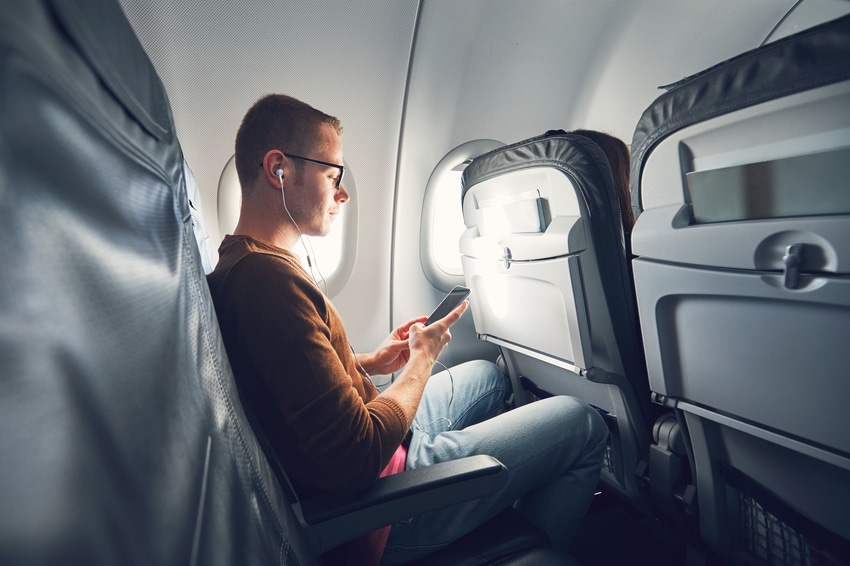Aeronautical engineering firm Boeing has submitted a filing with the FCC arguing aircraft should be defined as indoor space to more easily permit the use of unlicensed spectrum.
April 9, 2019

Aeronautical engineering firm Boeing has submitted a filing with the FCC arguing aircraft should be defined as indoor space to more easily permit the use of unlicensed spectrum.
The filing focuses around the use of 6 GHz unlicensed spectrum and the growing demand for in-flight connectivity. As you can imagine, delivering connectivity at almost 40,000 feet while travelling at 500 mph is somewhat of a complicated task, therefore Boeing is requesting more assistance from the FCC.
“On April 3, 2019, representative of The Boeing Company (“Boeing”) met with Commission staff to discuss the technical justifications for treating the inside of large commercial aircraft as being equivalent to indoor locations for purposes of the Commission’s rules for unlicensed devices operating in the 6 GHz band,” General Counsel Bruce Olcott wrote in the filing.
In-flight connectivity is one of the fastest growing trends in the digital era, with Deloitte predicting on billion passenger journeys, one quarter of the total, across 2018 were on aircraft equipped with gear to make the internet possible. It might still be expensive for passengers, but as momentum grows the price will certainly come down. In fact, Inmarsat predicts the in-flight connectivity market could be worth as much as $130 billion annually by 2035.
To continue this momentum, Boeing is now arguing the inside of aircraft should be technically defined as indoor locations to make unlicensed spectrum more accessible.
The argument from Boeing does sound quite logical and reasonable. The firm argues the fuselage of an aircraft provides radio signal attenuation levels, blocking the signal, of at least 17.3 dB on average in the frequency range of 6 GHz. This is effectively the same as many buildings, suggesting there will be little to no additional interference from using the spectrum.
Boeing also points out that the Federal Aviation Administration has banned the use of wireless communications below 10,000 feet. Therefore, any ground operations making use of the 6 GHz spectrum would have zero interference as the aircraft would be well out of range when at cruising speeds (38,000 feet).
When combining the remote locations of airports (for the most part) and the fuselage of an aircraft blocking any signal inside the plane, Boeing believes aircraft carriers should be permitted to offer wifi services on unlicensed 6 GHz spectrum while the plane is parked at airports and in flight.
The filing comes at a time where the FCC is considering rule changes for unlicensed spectrum in the 6 GHz band. Certain parties are supporting the idea, though AT&T and other telcos are resisting, suggesting broadband and satellite operations should remain under more stringent protection.
Back in October, the FCC Commissioners voting unanimously to expand the 6 GHz band to support next-generation wifi devices, 1,200 MHz of spectrum to be exact. Although there is risk of displacing existing devices, the FCC appears to expect minimal interference between prior and future devices, as wifi is most likely to operate indoors.
“…with the massive amount of wireless traffic that is off-loaded to wifi, opening up this wide swath of spectrum for unlicensed use could be a big boost to our nation’s 5G future,” Pai said in a statement following the decision.
Whether the FCC had in-flight connectivity as a usecase while they were drawing up these rules is uncertain, but it is certainly a trend which is worth addressing.
About the Author(s)
You May Also Like








.png?width=300&auto=webp&quality=80&disable=upscale)


_1.jpg?width=300&auto=webp&quality=80&disable=upscale)


.png?width=800&auto=webp&quality=80&disable=upscale)